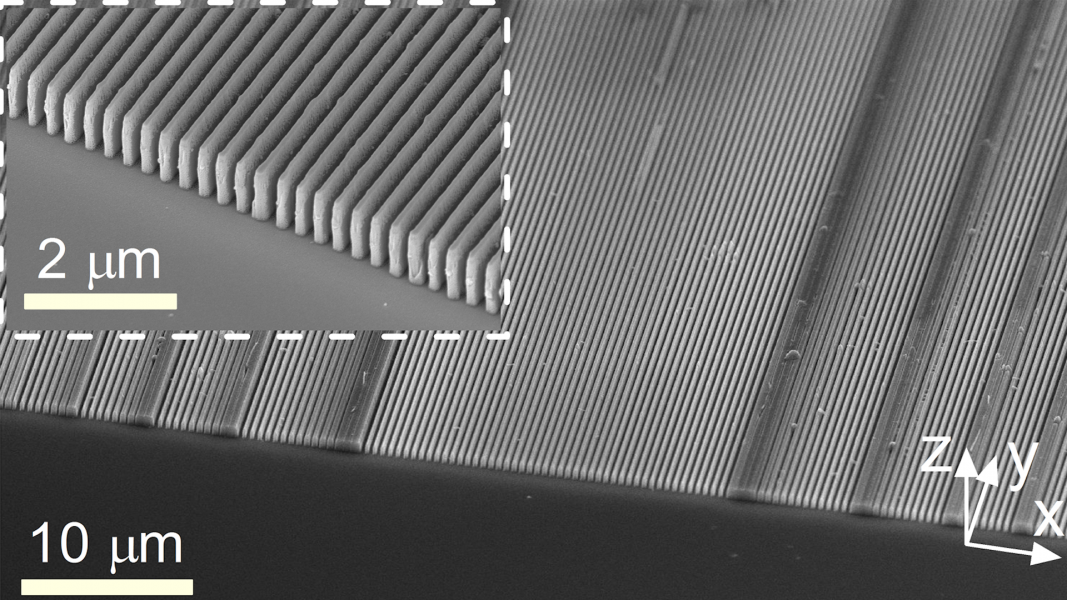Fourier optics are fundamental to modern optics, finding use in holography, spatial filtering, and compressed sensing. Fourier lenses can achieve complete control over the phase and Fourier components of light, and could find application in telecommunication platforms.
In an article in Advanced Materials, Prof. Shuang Zhang from the University of Birmingham, Prof. Shuqi Chen from Nankai University, and their co-workers, report a 1D, wide-angle Fourier metalens that operates over a broad optical bandwidth.
A dielectric waveguide of amorphous silicon on a fused silica substrate was fabricated, which was used to construct a metalens of 190 × 100 µm size.
To demonstrate the Fourier transform ability of the metalens, a transmission grating was designed. The diffraction angle was characterized through the metalens, and through a commercial Fourier lens (GCO-0201M) for comparison. As expected, the commercial lens was unable to detect large incident angles of the 1st order diffraction peak, while the measured peak position and intensities for the metalens were close to the theoretical values.
Spatial filtering was also observed when the grating was moved along the x-direction, and a pattern was recorded for incident wavelengths of 1100, 1300, 1500, and 1700 nm. The results confirm the ability of the metalens to perform Fourier transform of an incident wavefront with a large incident angle.
To find out more about this wide-angle Fourier metalens, please visit the Advanced Materials homepage.

















